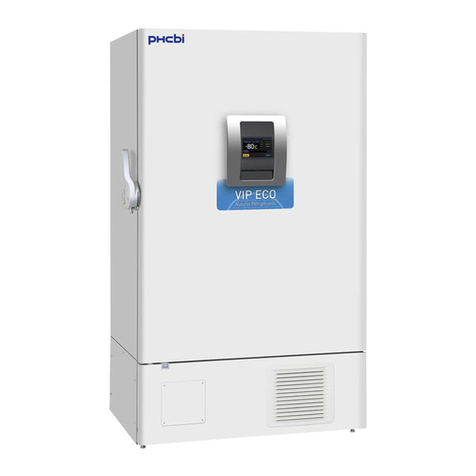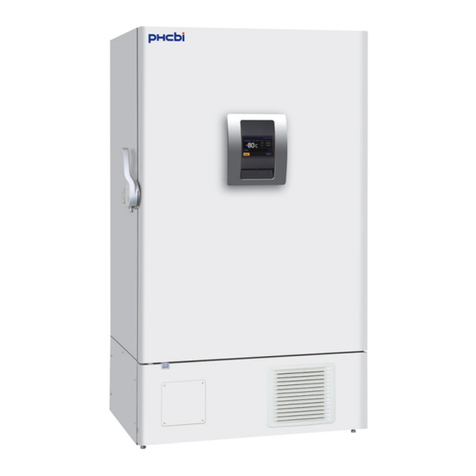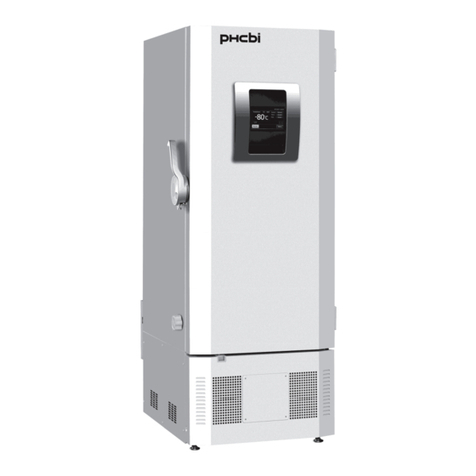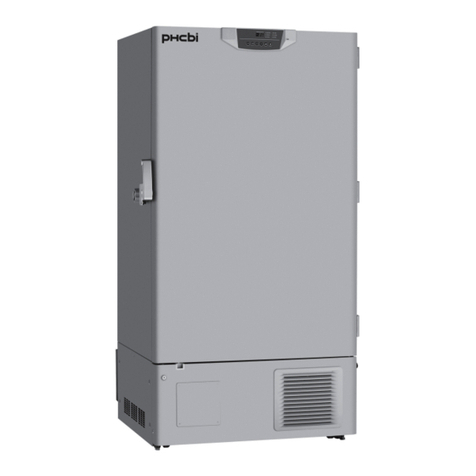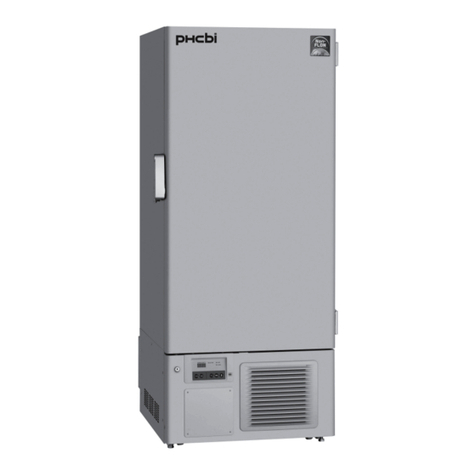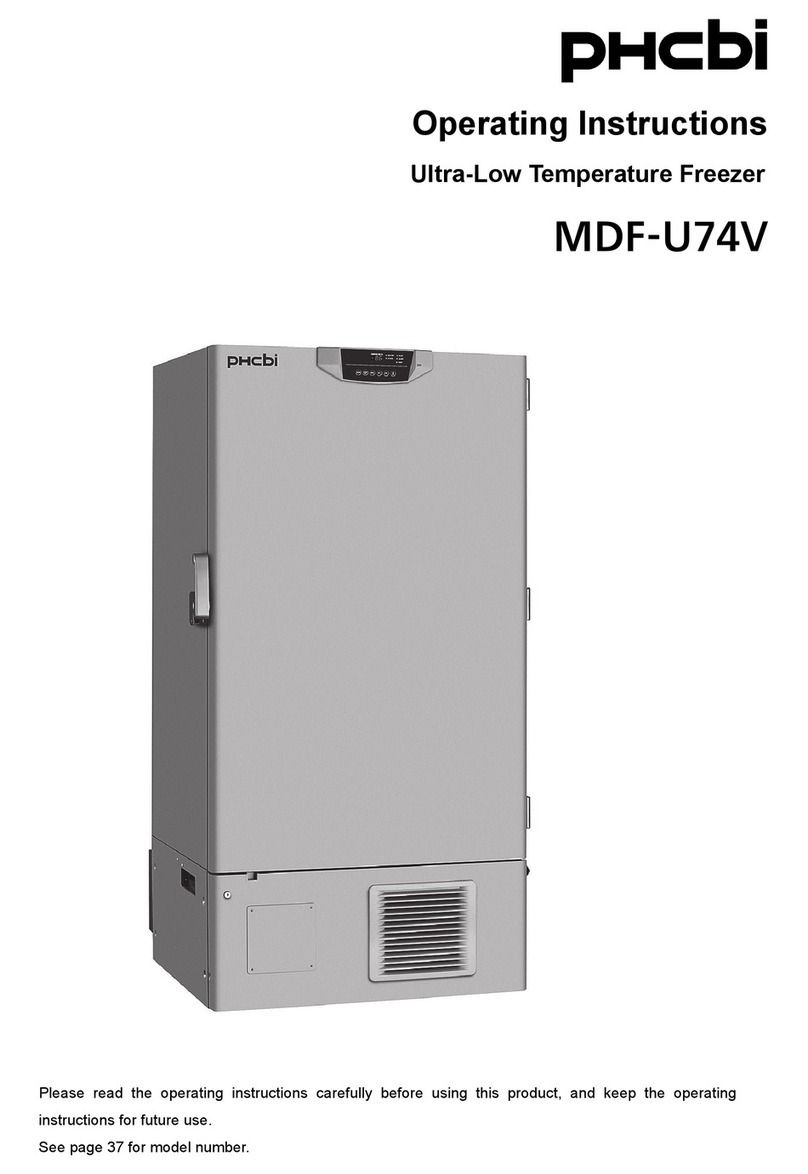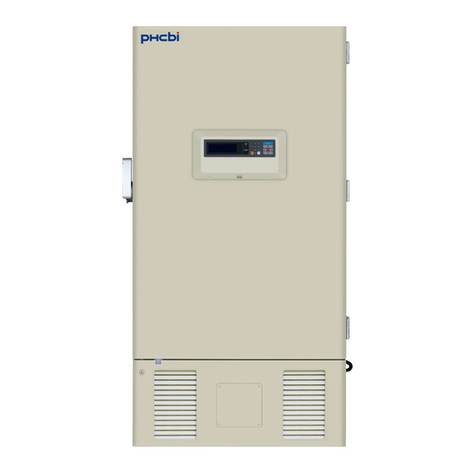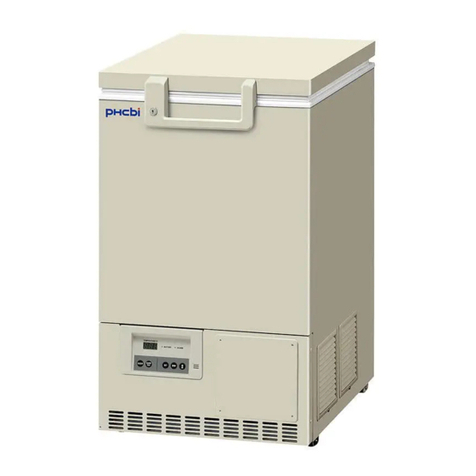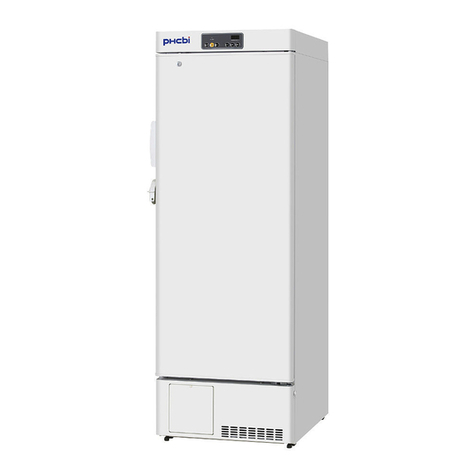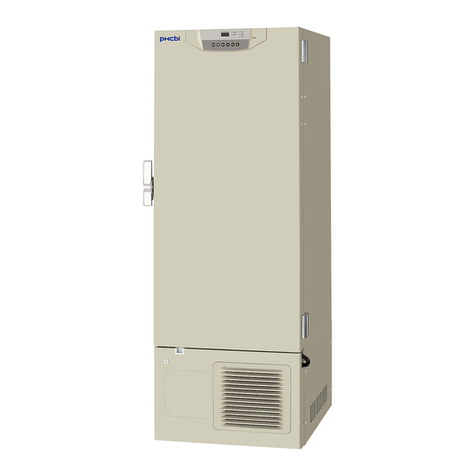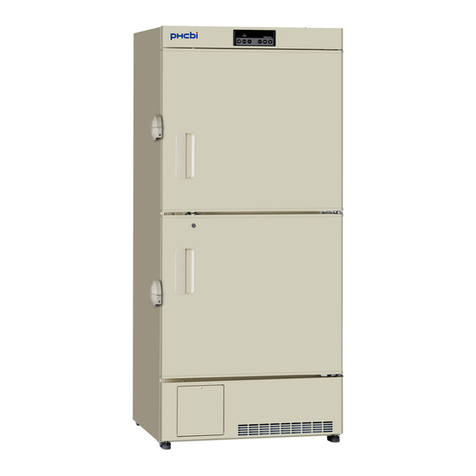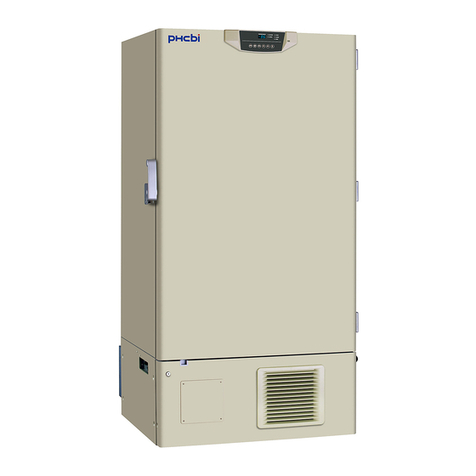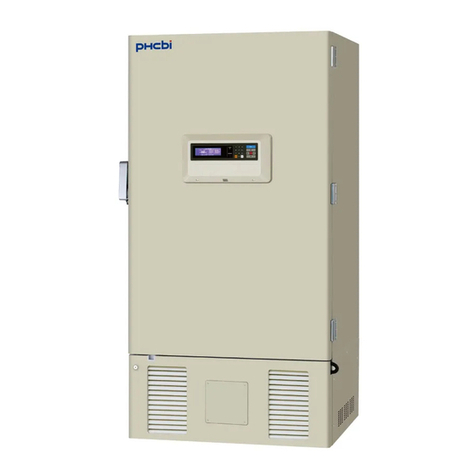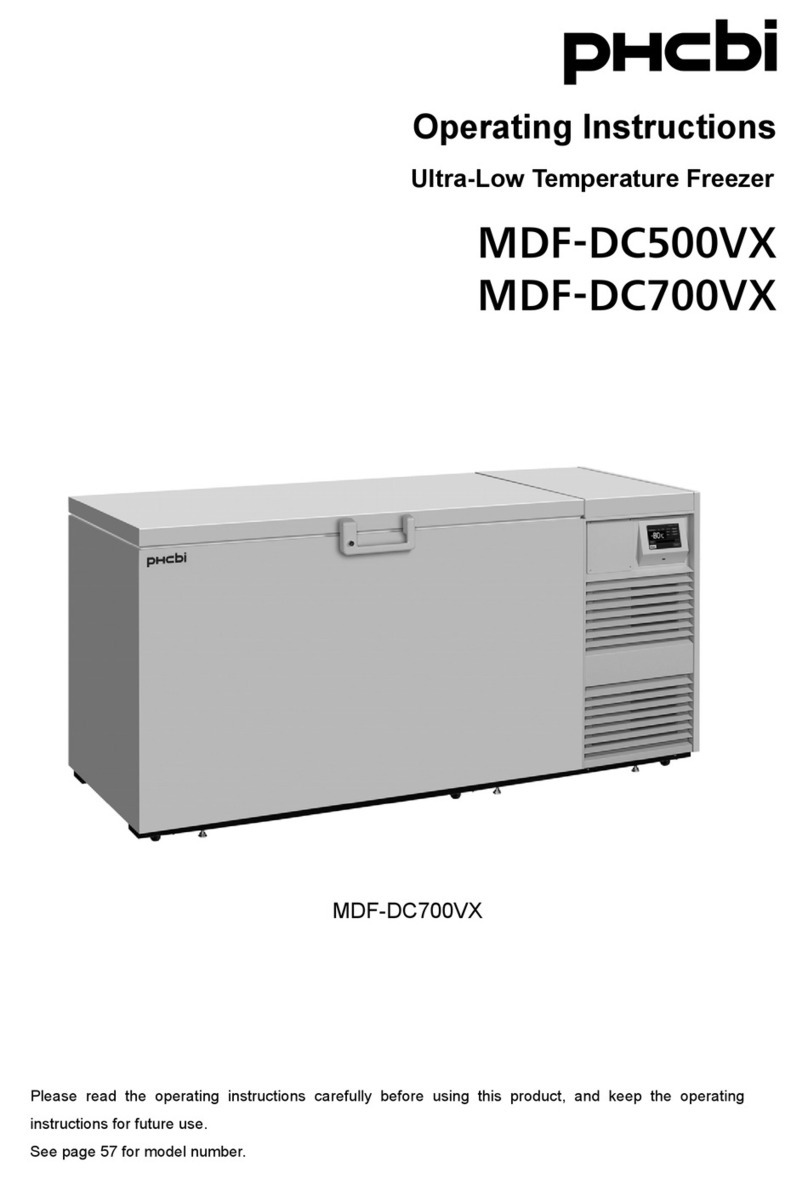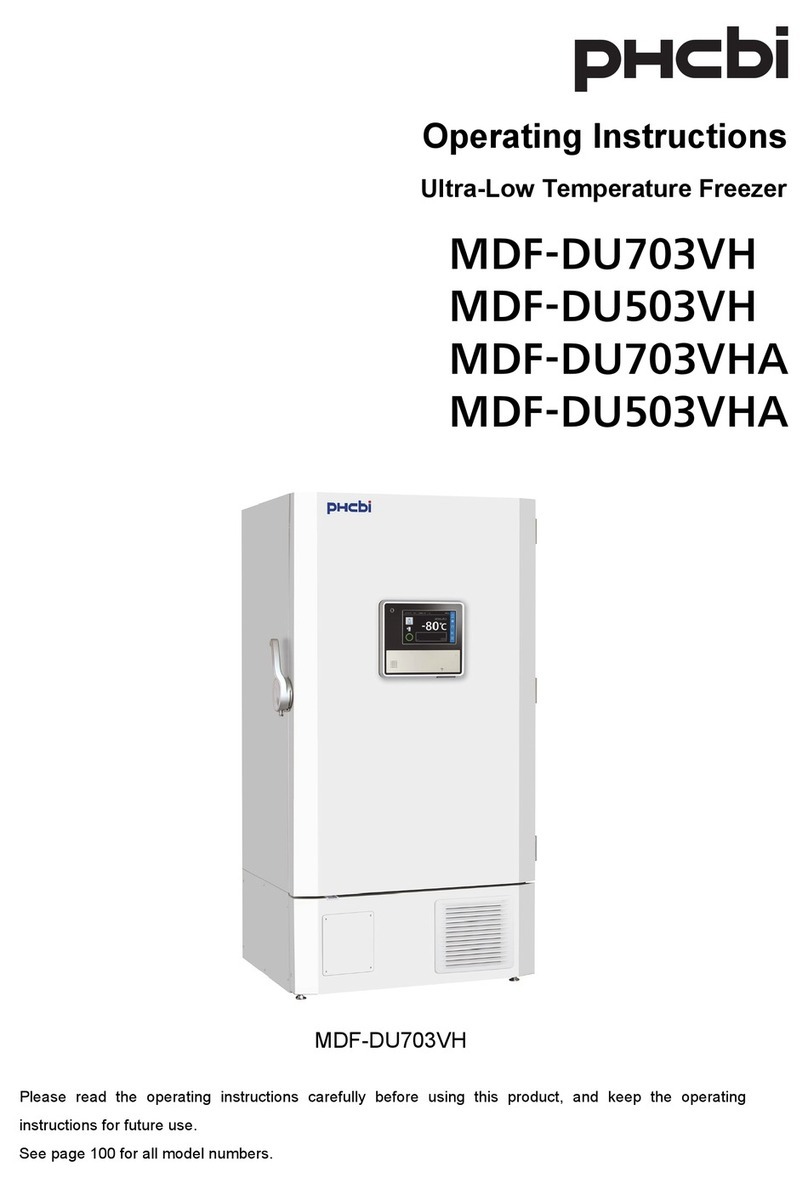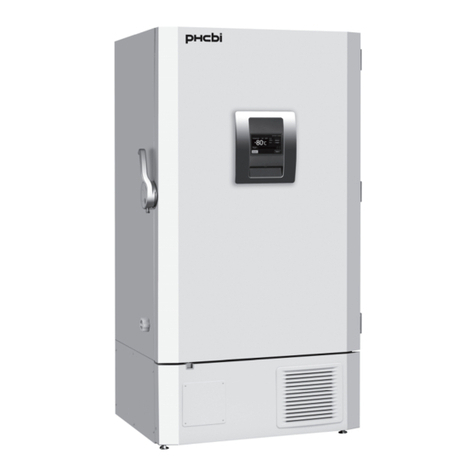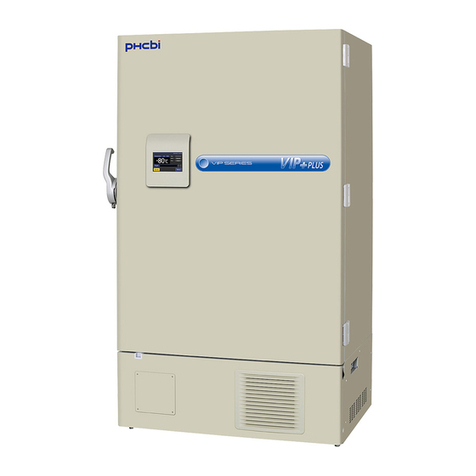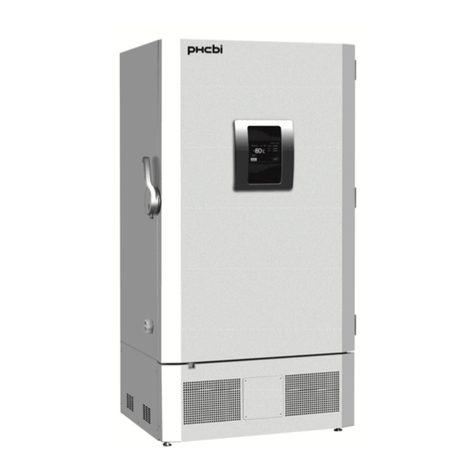CAUTIONS FOR USAGE
1. If the unit is unplugged or the power to the unit is interrupted, do not restart the unit for at least 5 minutes.
This protects the compressor.
2. This inner cabinet is refrigerated by the forced circulation of cooled air inside the chamber. Ensure that
the intake and exhaust vents are not blocked. Adequate space should be provided between the items
inside the unit to allow air circulation.
3. Never store corrosive materials such as acid or alkali unless the container is completely sealed up.
Corrosion may lead to failure of the unit in time.
4. Once the chamber temperature has stabilized, put the items into the chamber in small batches to
minimize the temperature increase.
5. Place items on the shelves and leave a space between the wall of the cabinet and the contents to allow
air circulation. Do not place items on the floor of the chamber.
6. Always close the door firmly. The door check lamp is lit when the door is open. The alarm buzzer sounds
after two minutes the door opening. The buzzer can be canceled automatically when the door is closed.
7. Always open and close the door gently. Rough operation may lead to stored items falling down,
incomplete closing, or damage of door gasket.
8. In the freezer compartment, put stored items on the shelves and do not let them contact the wall.
9. If an instrument requiring a power source is to be placed inside the cabinet, the cable can be led through
the access port on the right side of the cabinet. After using the port, the rubber cap and insulation should
be replaced to seal the access port. Failure to do this can affect the temperature uniformity inside the
cabinet and lead to condensation on the outside of the access port.
10. Do not clean the unit with scrubbing brushes, acid, thinner, solvents powdered soap, cleanser or hot
water. These agents can scratch the paint or cause it to peel. Plastic and rubber parts can be easily
damaged by these materials. Especially never use any volatile solvent to clean the plastic or rubber
parts. When a neutral dishwashing detergent is used to clean the unit, wipe it up thoroughly with a cloth
soaked in clean water.
11. If condensation forms on the door or frame surface, wipe it off with a dry soft cloth.
12. The heat discharge pipe is attached inside both the side and rear frame. The frame sometimes gets hot
at the start-up of the operation, but this does not mean that a malfunction has occurred.
13. Handling, moving and use of the freezer must be done with caution to avoid either damaging the
refrigerant tubing or increasing the risk of a leak
